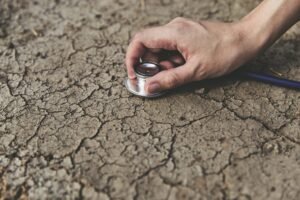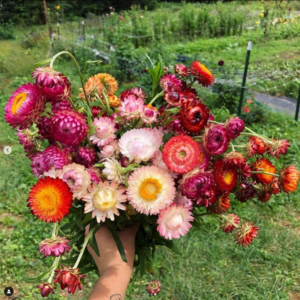
Regenerative Farming
In part two of our three-part series on sustainability we explore living soil and regenerative farming. In case you missed part one, check it out here!
Dead Dirt

Years ago I read a book by chef, Dan Barber, called The Third Plate. It was shortly after my two sons were diagnosed with celiac disease. Managing the disease is super simple–just don’t ingest gluten! Discovering why celiac disease and other autoimmune disorders are on the rise was a little more complicated, but I felt a lot of clues were in Dan Barber’s book. Barber writes about living soil (as opposed to dead dirt) and thriving heritage crops (as opposed to genetically modified crops sustained by chemicals).
Living Soil

The more research I do, the more I am convinced that creating and sustaining healthy living soil through regenerative farming practices is the key to so much of what ails us and our planet. If you want some inspiration on how transformative healthy soil and regenerative farming can be, just watch Kiss the Ground and The Biggest Little Farm!
This blog post from Heirloom Soul Florals outlines these practices and the benefits that they bring:
“Very literally, ‘Regenerative’ Farming means we are rebuilding and rejuvenating life on earth. The ‘re-’ is critical for our understanding, because our land, at one time, was full of incredible life. We humans have spent millennia, and most notably the past few decades, effectively destroying life on earth. Through Regenerative farming and gardening, we can restore that lost life. We won’t be able to fully restore it to what it once was, but we can make it 100-fold better than it is now and guarantee a habitable planet for our future generations.”
Local Flower Farmers

The local flower farms we purchase from through Old Dominion Flower Cooperative are all organic and many incorporate regenerative practices such as no-tilling and cover-cropping. This short but illuminating video by Grateful Gardners, one of our local flower farmers, does a great job of explaining how and why farms like theirs make a difference.
By supporting our local family-owned flower farmers, we are supporting the bigger initiatives of regenerative farming and moving away from a dependence on flowers flown in from other countries. Local flowers are not inexpensive, but we feel the uniqueness and quality of the flowers as well as the monumental benefits of regenerative farming practices are worth every penny we invest.
Stay tuned for part three!

Pingback: Dried ElementsNovember 1, 2022